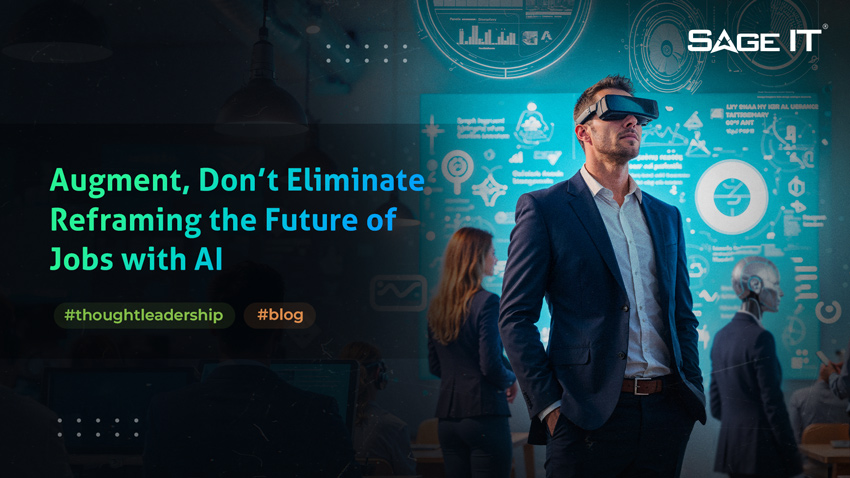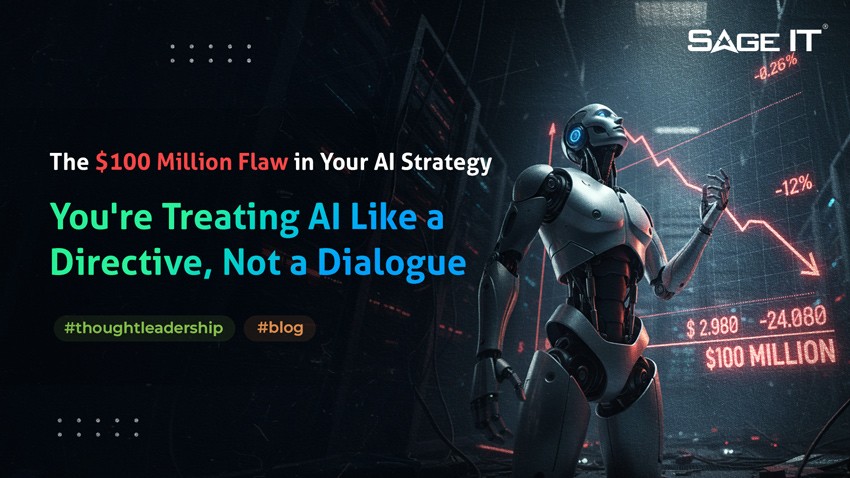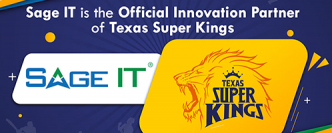Artificial intelligence promises to scale human ingenuity in ways no technology ever has. But here’s the uncomfortable truth: unless we are intentional, it will also scale exclusion.
AI doesn’t decide to discriminate. People do through the data they choose, the teams they build, and the leadership choices they make. If the systems we build reflect only the majority, they risk sidelining the very people who could benefit most.
The question every C-level leader must ask is simple: Are we building AI that serves everyone, or are we only capturing the easiest voices?
Inclusion isn’t a footnote in the AI conversation. It is a foundational design principle, a moral imperative, and increasingly, a business advantage.
Responsible AI isn’t just smart. It’s fair, representative, and human-centered. And most importantly for executives, inclusion isn’t merely an ethical safeguard; it’s a growth strategy where the markets you ignore today become your competitors’ revenue streams tomorrow.
The Exclusion Risk in AI Systems
Let’s be clear: AI doesn’t “intend” harm, but it can amplify inequity at scale.
These are not glitches. They are systemic failures of leadership as much as engineering. Left unchecked, they risk codifying inequality into the operating system of society.
The Business Case for Inclusive AI
Inclusion is not charity. It’s strategy.
Inclusive AI systems:
According to a November 2025 global study by SAS and IDC, the business case for ethical AI is undeniable: organizations that prioritize trustworthy, inclusive systems are 60% more likely to double their ROI on AI projects. The message is clear: bias is a technical liability, while responsible design is a growth engine.
And here’s the human layer: The 2025 Edelman Trust Barometer confirms that trust is the primary threshold for adoption. Employees are far more likely to use tools they perceive as safe and fair, while customers punish brands that deploy ‘black box’ systems they cannot understand. In 2025, fairness isn’t just a metric it’s the currency of trust.
The Five Dimensions of Inclusive AI
Building inclusive AI isn’t about writing more code. It’s about how we lead. Here’s a leadership checklist for executives:
1. Inclusive Data
Biased data leads to biased AI. Period.
- Audit training datasets for representational gaps
- Supplement with underrepresented voices
- Understand historical context, not just raw numbers
- Continuously refresh models as society and language evolve
Diversity isn’t just demographic. It’s behavioral, contextual, situational and those dimensions shape real customer demand.
2. Diverse Design Teams
Who builds the system matters as much as what they build.
- Technical talent from varied backgrounds
- Business leaders who understand customer diversity
- Ethicists, social scientists, and legal advisors
- People with lived experiences of marginalization
The more perspectives at the table, the more inclusive the outcomes.
3. Transparent Objectives
Optimization without ethics is dangerous.
- Define success metrics that account for fairness and equity
- Question what “optimal” means when humans are involved
- Build review processes that use ethical as well as performance lenses
Transparency in intent leads to accountability in execution.
4. Accountable Governance
Inclusion isn’t a one-time audit. It’s a living responsibility.
- Establish AI ethics boards with teeth, not tokenism
- Create feedback loops so users can contest harm
- Require explainability, redress, and shutdown protocols
- Give governance real authority, not advisory status
If you wouldn’t trust the outcome with your own family’s life, it isn’t ready for deployment.
5. Inclusive Deployment
Even well-designed AI can exclude in rollout.
- Who has access to the tool, and who doesn’t?
- Does the UX assume a certain literacy or ability?
- Are some groups disproportionately impacted?
Inclusion doesn’t end at design. It extends to delivery and impact.
Inclusion Is a Leadership Choice
Inclusive AI doesn’t happen by default. It happens when leaders make inclusion a feature, not a fix. That means:
Leaders set the tone. Teams build what leadership rewards.
The Moral Arc of AI
As Dr. Ruha Benjamin argues, the idea that automation naturally leads to fairness is dangerously naïve automation can hide, speed up, and deepen existing discrimination rather than neutralize it. And as Dr. Joy Buolamwini’s research uncovers that biased algorithms go beyond mere miscalculation they misrepresent entire groups by systematically failing to recognize darker-skinned and female faces.
We are at an inflection point. AI can either replicate old biases at unprecedented scale, or it can help us design a more equitable future. The choice is ours.
Inclusion Is Innovation
Inclusion isn’t a constraint on innovation. It is the engine of it.
Imagine a world where AI helps a farmer in Kenya access fair credit, a student in Brazil get personalized learning, or a patient in rural India receive quality diagnosis. That’s the scale of innovation inclusion unlocks.
So, as you review your AI roadmap, ask yourself:
Because if we don’t design inclusion into AI, exclusion will design itself.
Bias isn’t inevitable. Exclusion isn’t destiny. Algorithms don’t have ethics. Leaders do.











